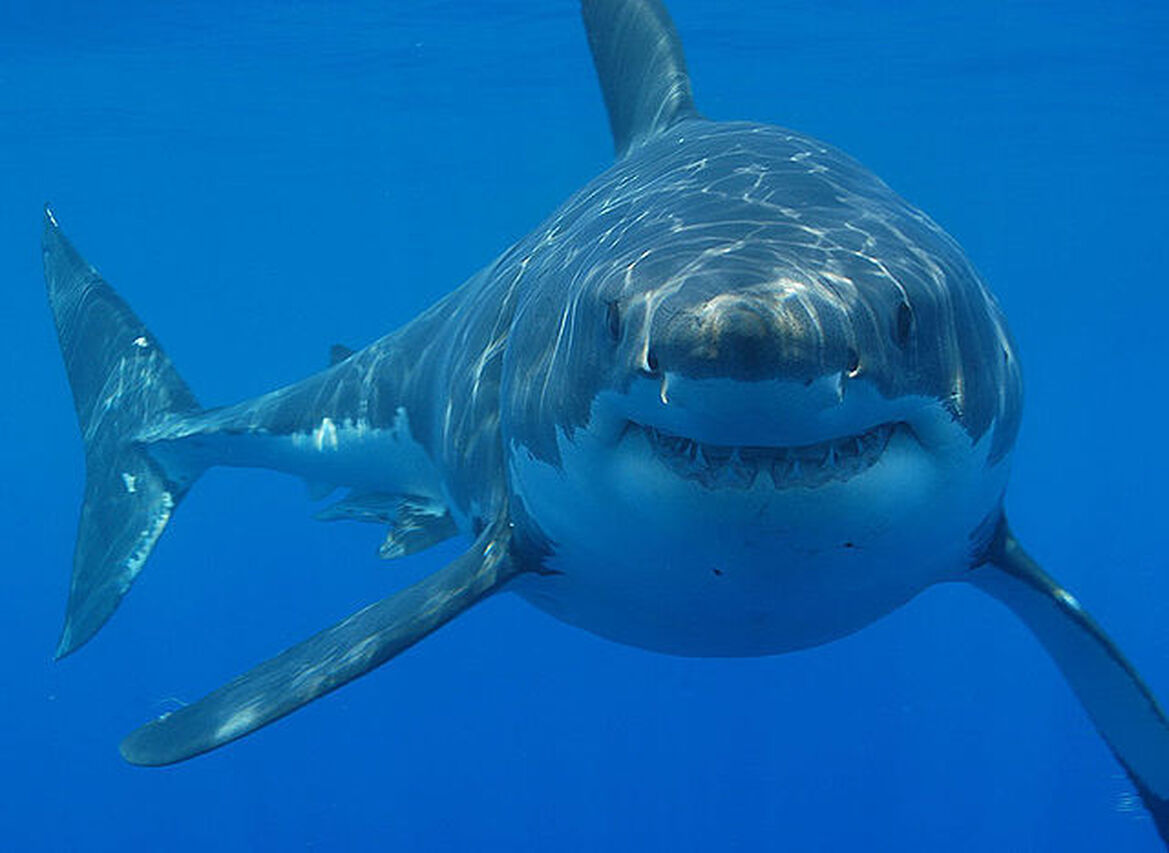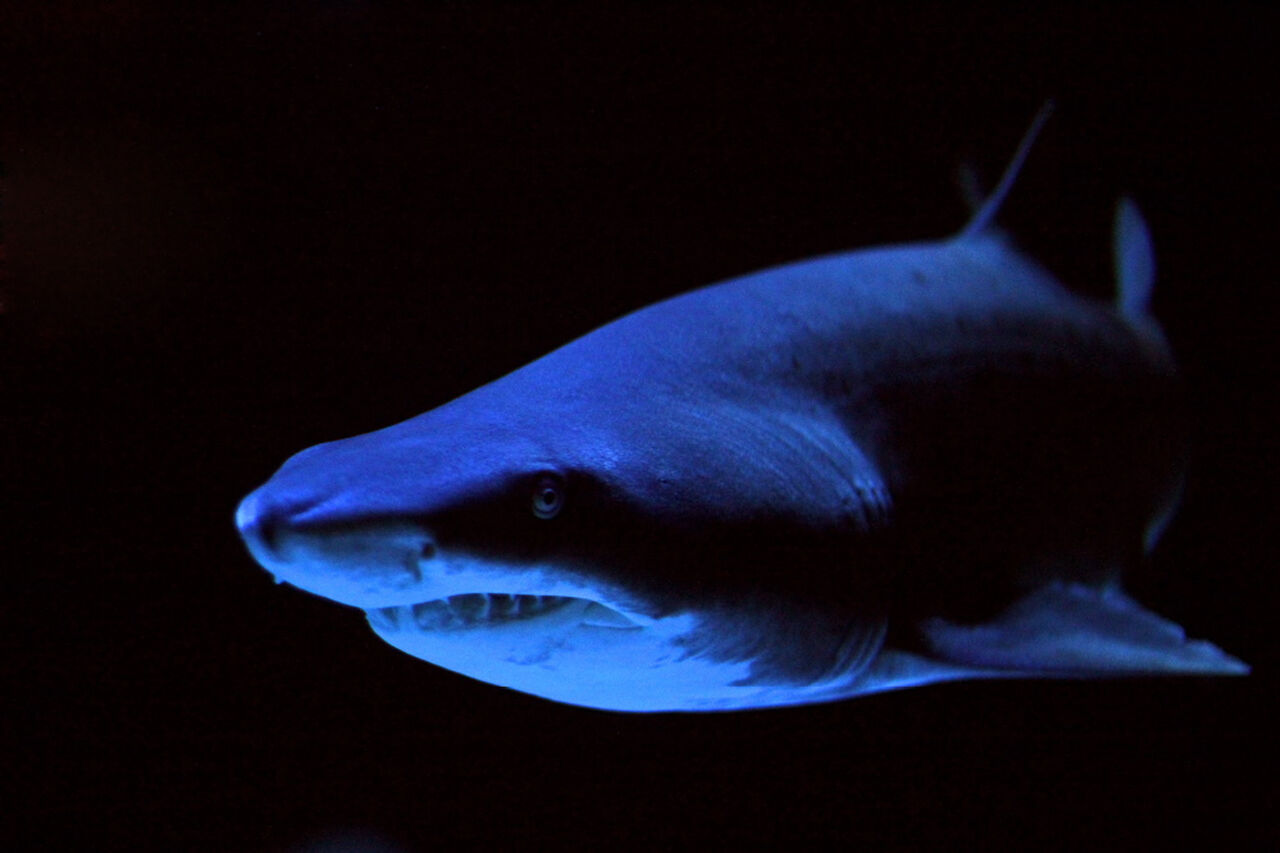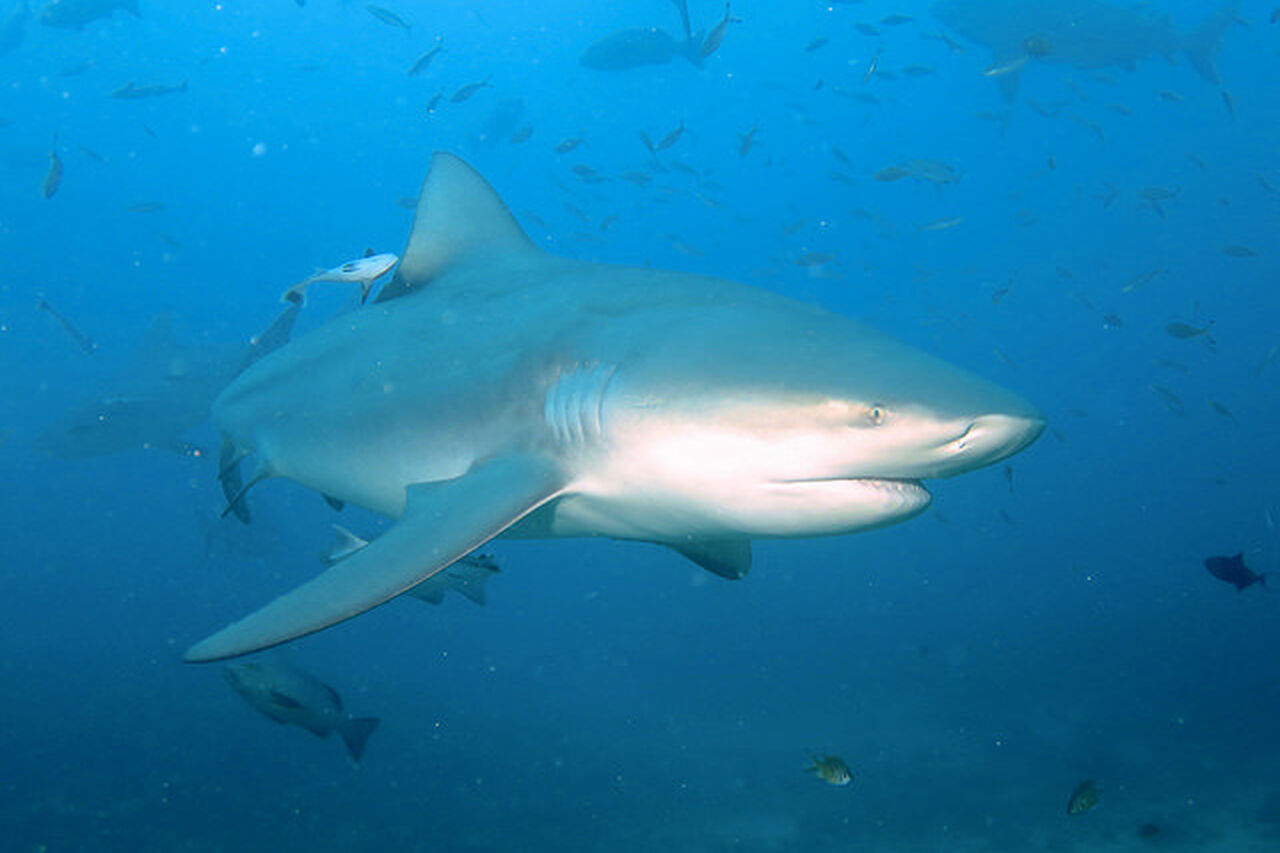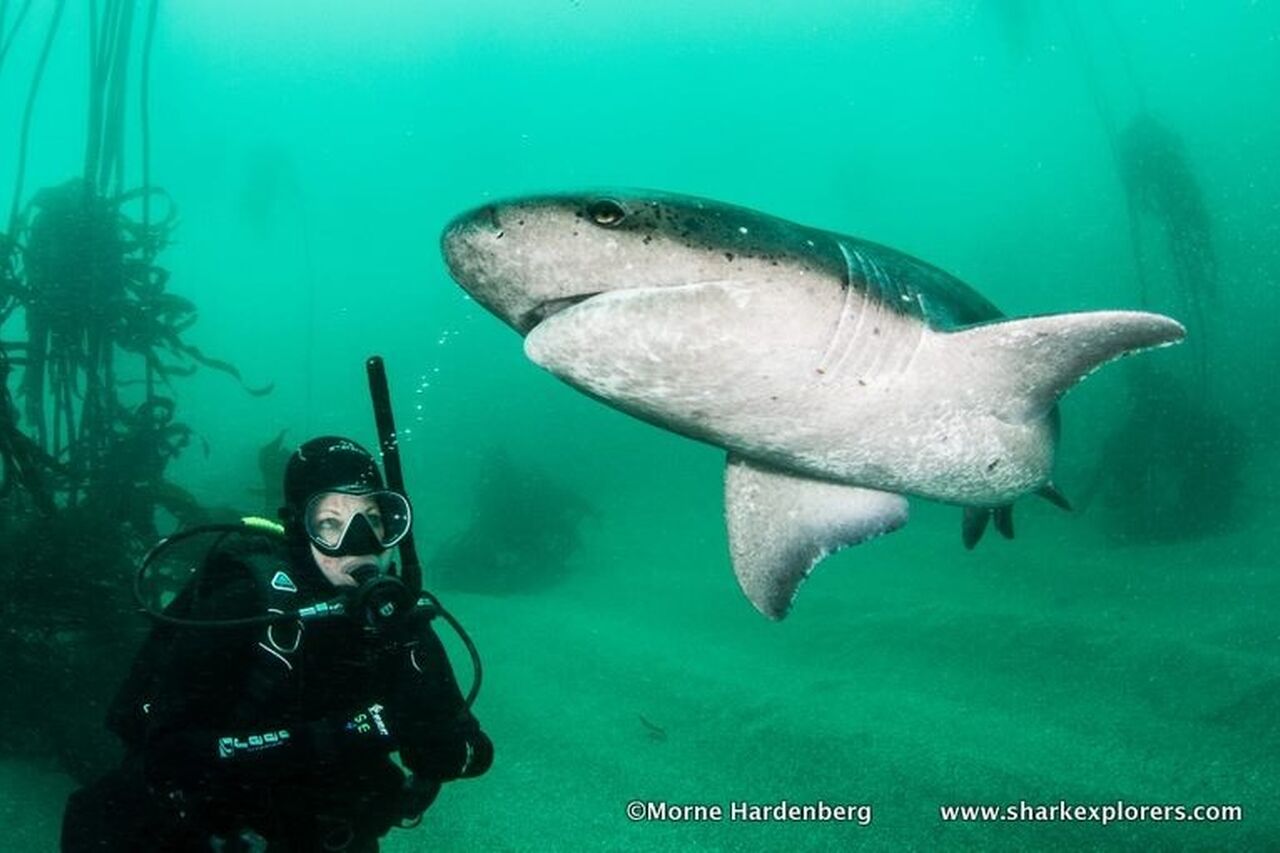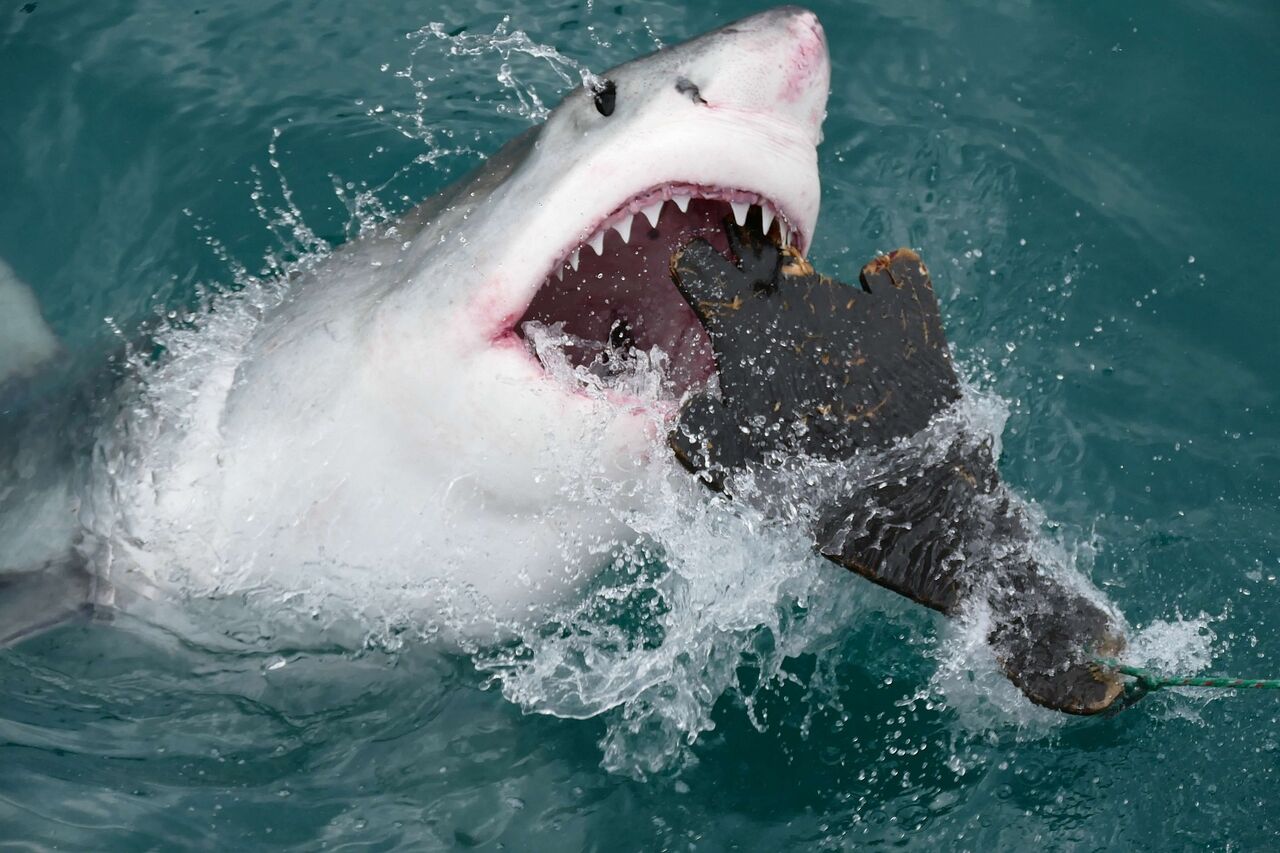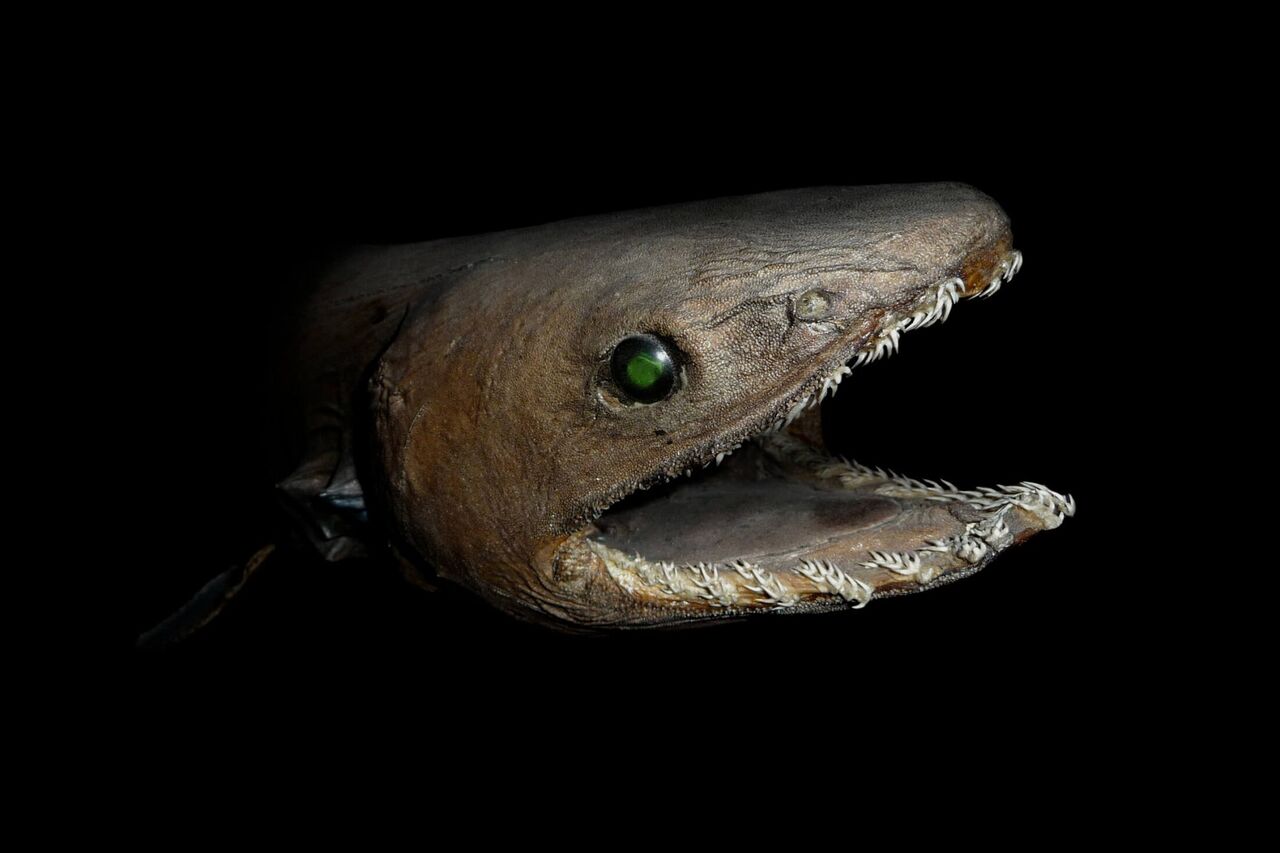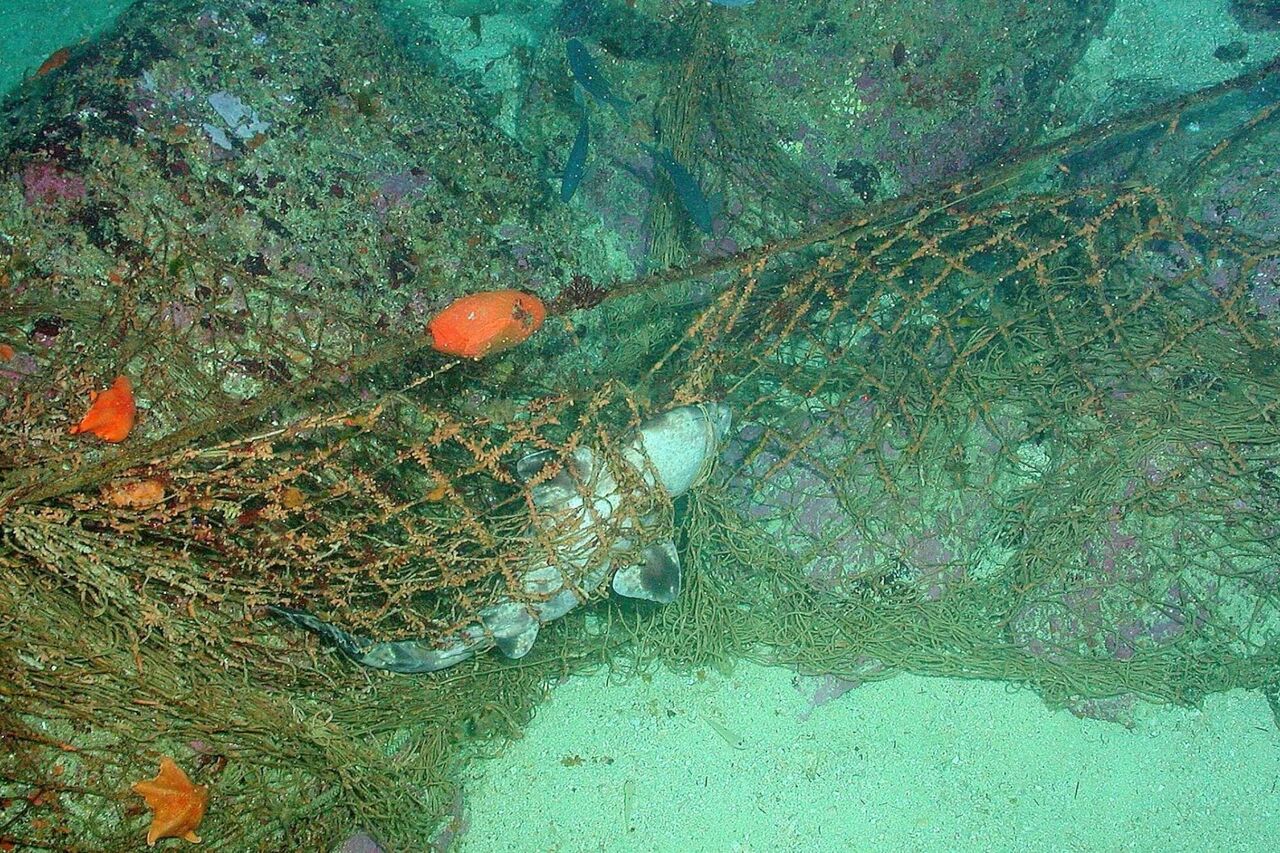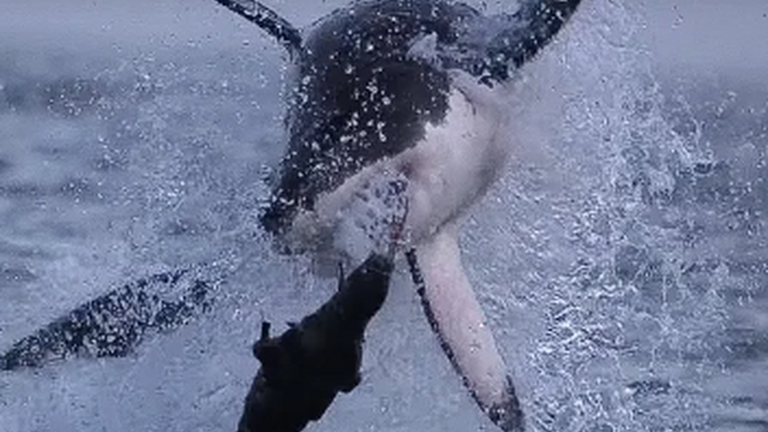Everything you've ever wanted to know about sharks in South Africa

Cover photo by flowcomm / (CC BY 2.0)
The Two Oceans Aquarium is home to five ragged-tooth sharks that are currently housed in the Save Our Seas Foundation Shark Exhibit. Thanks to our amazing partners at the Save Our Seas Foundation, our visitors can experience a close encounter with some of the most misunderstood species in South Africa's oceans. In addition to ragged-tooth sharks like the ones at the Aquarium, South Africa's waters are teeming with incredible animals, underwater landscapes, and diverse ecosystems. Part of this incredible diversity is the over 100 species of shark that call Mzansi home - here's everything you need to know about sharks in South Africa.
On the East Coast, the warm Agulhas current of the Indian Ocean flows south towards Cape Agulhas. On the west coast, the cold Benguela current flows north, carrying the cold waters of the Atlantic Ocean. While the "meeting point" of these two oceans constantly shifts, they certainly mix, and the variety of life found here makes South Africa one of the most fascinating places to learn about marine biology (and it's why we're called the "Two Oceans" Aquarium!).

Where there is an abundance of food, there is also an abundance of predators, and these oceans are home to some of the most highly evolved apex predators on the planet: sharks.
What kinds of sharks do we have in South Africa?
Sharks are ancient. Not only were they on Earth millions of years before the dinosaurs, but they are more ancient than almost all the common forms of life you'd recognize today. Insects, trees, reptiles, mammals, amphibians - sharks are millions of years older than them all.
There are about 440 known shark species in the world, and South Africa is home to about a quarter of them. Here are a few of our favourites:
Great white shark
Ragged-tooth shark
Tiger shark
Zambezi/bull shark
Whale shark
- World's largest living fish
- 3 000 tiny teeth in each jaw
- Covered in distinctive white spots
- Slow-swimming filter feeder
Sevengill/cow shark
Sharks are classified as Chondrichthyes (pronounced "con-drik-thees"). These are fish with skeletons made of cartilage rather than bone (skates and rays also belong to this class). Within the species, there is also a lot of variety – some catsharks can fit into the palm of your hand, while whale sharks can grow longer than 12 metres!

What do sharks eat?
Sharks have different diets depending on their shape and size. Smaller sharks tend to be bottom feeders - hanging around reefs or the ocean floor where they can scavenge or collect the detritus that falls from the surface. Larger pelagic sharks – the ones closest to the surface – hunt a variety of fish or bigger prey like whales and seals.
How do sharks hunt?
Great whites are known for being precision hunters, using all five senses that humans also have – plus a few extras – to track down prey. They can sniff out a single drop of blood in 100 litres of water, and see very well in low light. They can also detect electrical impulses given off by other animals, as well as vibrations and pressure changes all along their bodies.
Other sharks have different methods. Ragged-tooth sharks gulp air at the surface and use it to become buoyant, slowly creeping up on their prey with minimal motion. Whale sharks don't hunt, but rather swim with open mouths, filtering tiny plankton and krill from the water.
How do sharks reproduce?
Many sharks are ovoviviparous, meaning they produce eggs that hatch within the mother's body. Life can be pretty brutal for a shark pup from the get-go – in some species, the strongest pup will eat its siblings before they are born, leaving just one other.
Others lay "mermaid's purses", which refers to a tough leathery pouch that protects a developing shark or skate embryo.
How deep can sharks go?
The deepest that sharks have been found is around 3 000m. But a more impressive feat is how far they swim.
How far do sharks swim?
We're glad you asked! While this is still an area of ongoing research, we know that great white sharks are capable of crossing entire oceans. A shark tagged in 2004 swam from South Africa to Australia and back, a distance of some 20 000km, while a more recent study found another great white swimming more than 32 000km, crossing the Atlantic and meandering along the US coast.
Are all sharks dangerous to humans?
Not at all! While we recommend exercising caution while swimming in the ocean, only a handful of species have ever been implicated in unprovoked attacks on humans. Of these, attacks have often been due to mistaken identity – in other words, a human is mistaken for a seal or a turtle. (If you have ever looked up at a surfer from below the water, you'll know this is an easy mistake to make). Some individual creatures may be more aggressive than others and, of course, it is better to stay out of their way altogether. Remember, when entering the water, we are entering their territory.
As more and more people flock to South Africa's beaches, take up snorkelling or scuba diving, and go shark-cage diving, the increase in human activity in the ocean has led to more contact with sharks. One way of avoiding potential attacks is to move people out of the way when a shark is in the area. On selected Cape Town beaches, this is done by shark spotters.
Are humans dangerous to sharks?
Ever since the release of Jaws, sharks have received a lot of bad press. They have been portrayed as mindless killers with a taste for humans. In some cultures, shark teeth are seen as collectables and, in others, shark fins are used in soup.
Add to this the overall trend of overfishing (where fish stocks are reduced so badly that populations cannot recover) and bycatch (where other species besides the one being fished are caught up in fishing nets), and the future looks particularly bleak. While sharks kill an average of about five humans a year, humans kill approximately 100 million sharks annually. That's more than 11 000 sharks killed per hour or 190 per minute. Every day. This slaughter is largely a result of the finning industry, according to this report. Sharks have their fins cut off and are then tossed back into the ocean, where they sink to the bottom and die a slow and inhumane death.
“More people are bitten by other people in New York every year than by sharks worldwide. More are killed by cows.” - David Shiffman, 2014
Sharks in captivity
For the reasons mentioned above, the Two Oceans Aquarium has chosen to play a role in marine education and conservation. More than a third of all shark species are at risk of extinction. But we will not be able to save these majestic creatures from dying out if people never get the opportunity to see them with their own eyes.
We have built exhibits that closely mimic the real habitats of the animals we look after at the Aquarium. All 3 000-plus species at the Aquarium are cared for by experienced, passionate marine biologists, to ensure they remain well-fed, disease-free and, in some cases, properly socialised and stimulated.
Moreover, we consider the sharks on display at the Aquarium to be ambassadors for their species, playing a vital role in the well-being of their entire population. They spend a few years with us, educating the public and being cared for, and then we release them back into the ocean.
Kinds of sharks at the Two Oceans Aquarium
The Two Oceans Aquarium is home to many iconic sharks. Break your shark misconceptions at the Save Our Seas Foundation Shark Exhibit, meet the camouflaged sharks of the Kelp Forest Exhibit, and discover small shysharks and their eggs.
Did you know that the Two Oceans Aquarium releases its sharks back into the wild?
First, we carefully transport the shark from our exhibit to a special holding tank on the roof of the Aquarium (using a "shark cone"), where it is given a full health inspection by a vet and tagged, so we can track its whereabouts.
Next, we administer a small anaesthetic to keep the shark calm while it is transported by truck to an appropriate release spot along the coast. We then release the shark from our boat, ensuring it safely swims away unharmed
What happens to sharks after they are released?
Special receivers, designed to listen out for the "ping" sound emitted by shark tags, are dotted along the coast. Every time a tagged shark swims past, we can log that information. Over time, we are building up a richer knowledge base about sharks, including their migratory patterns, their age, their breeding habits and other details. The more we know about them, the better we can protect the species.
Where can I see sharks in the wild?
Great white sharks can be seen leaping out of the water in pursuit of Cape fur seals in False Bay at Seal Island or in Gansbaai. If you choose to go shark cage diving, please ensure that you use a reputable, conservation-minded operator, such as Apex Predators (False Bay) or Marine Dynamics in Gansbaai.
I love sharks - how can I help?
- Simply by visiting the Two Oceans Aquarium you are contributing to shark conservation. Part of your ticket fee goes towards our research efforts.
- While visiting the Save Our Seas Foundation Shark Exhibit, educate yourself as much as you can!
- Dive at the Two Oceans Aquarium. By experiencing ocean life from below the waves, you will gain a better insight into why marine conservation is so vital.
- Help us spread the message to a new generation. Sponsor a schoolchild's visit to the Aquarium and our classroom (with school desks with built-in mini-aquariums!)
- Donate to conservation. Reach out to organisations that contribute to shark protection and conservation.
- Support these great organisations: the South African Shark Conservancy, the Save Our Seas Foundation, the AfriOceans Conservation Alliance, Shark Spotters.
Related News
Sign up to our Newsletter
Receive monthly news, online courses and conservation programmes.
